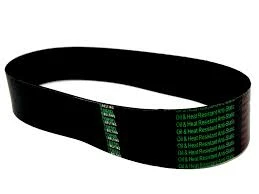- Arabic
- French
- Russian
- Spanish
- Portuguese
- Turkish
- Armenian
- English
- Albanian
- Amharic
- Azerbaijani
- Basque
- Belarusian
- Bengali
- Bosnian
- Bulgarian
- Catalan
- Cebuano
- Corsican
- Croatian
- Czech
- Danish
- Dutch
- Afrikaans
- Esperanto
- Estonian
- Finnish
- Frisian
- Galician
- Georgian
- German
- Greek
- Gujarati
- Haitian Creole
- hausa
- hawaiian
- Hebrew
- Hindi
- Miao
- Hungarian
- Icelandic
- igbo
- Indonesian
- irish
- Italian
- Japanese
- Javanese
- Kannada
- kazakh
- Khmer
- Rwandese
- Korean
- Kurdish
- Kyrgyz
- Lao
- Latin
- Latvian
- Lithuanian
- Luxembourgish
- Macedonian
- Malgashi
- Malay
- Malayalam
- Maltese
- Maori
- Marathi
- Mongolian
- Myanmar
- Nepali
- Norwegian
- Norwegian
- Occitan
- Pashto
- Persian
- Polish
- Punjabi
- Romanian
- Samoan
- Scottish Gaelic
- Serbian
- Sesotho
- Shona
- Sindhi
- Sinhala
- Slovak
- Slovenian
- Somali
- Sundanese
- Swahili
- Swedish
- Tagalog
- Tajik
- Tamil
- Tatar
- Telugu
- Thai
- Turkmen
- Ukrainian
- Urdu
- Uighur
- Uzbek
- Vietnamese
- Welsh
- Bantu
- Yiddish
- Yoruba
- Zulu
Dic . 30, 2024 11:35 Back to list
power transmission belt
Power Transmission Belts An Overview
Power transmission belts are crucial components in machinery and industrial applications, providing an efficient means of transferring power from one part of a machine to another. These belts are used in a variety of settings, ranging from automotive engines to industrial conveyor systems, and their design and functionality have evolved significantly over the years.
Types of Power Transmission Belts
There are several types of power transmission belts, each with specific characteristics suited to different applications
1. V-Belts Commonly used in automotive and industrial applications, V-belts are designed with a trapezoidal cross-section. This design allows them to fit snugly into the grooves of pulleys, providing a high level of friction and reducing slippage. V-belts are known for their flexibility and ability to handle high loads, making them ideal for a wide range of machinery.
2. Timing Belts Also known as synchronous belts, timing belts are designed with teeth that interlock with corresponding grooves on pulleys. This precise engagement ensures that the belts maintain alignment and timing between the powered and driving shafts, making them ideal for applications requiring precise motion control, such as in automotive camshafts.
3. Flat Belts Flat belts are one of the oldest types of power transmission belts. They consist of a simple, flat surface, which makes them easy to manufacture and maintain. Flat belts are typically used in lighter machinery where high power transmission is not required. Their simplicity and ease of use have led to their continued use in various belt-driven systems.
4. Round Belts These are cylindrical and are often used in light-duty applications. Round belts are flexible and can easily navigate around pulleys with smaller diameters. They are commonly utilized in small machinery and conveyor systems.
Material Considerations
Power transmission belts are made from a variety of materials, each selected for its unique properties. Common materials include rubber, polyurethane, and leather. Rubber belts are favored for their resilience and flexibility, while polyurethane belts offer superior wear resistance and strength. Leather belts, although less common today, were historically used due to their durability and flexibility.
Applications of Power Transmission Belts
power transmission belt

Power transmission belts are essential in a wide range of industries. In the automotive sector, V-belts are used to drive accessories such as alternators and air conditioning compressors. Timing belts are critical for engine timing, ensuring that the camshaft and crankshaft remain synchronized.
In manufacturing, conveyor systems rely heavily on power transmission belts for efficient material handling. These belts transport products across different stages of production, helping streamline operations and increase efficiency. In agriculture, belts are used in various machinery, such as combines and tractors, enabling the smooth transfer of power from the engine to working components.
Advantages of Using Power Transmission Belts
There are numerous advantages to utilizing power transmission belts in machinery
1. Efficiency Belts can transmit power efficiently over long distances, making them suitable for various applications. Their design minimizes energy loss due to slippage.
2. Versatility With various types available, power transmission belts can be tailored to specific applications, accommodating different load requirements, speeds, and distances.
3. Maintenance Belts generally require less maintenance than other mechanical systems, such as chains or gears. Regular inspections and proper tensioning are usually sufficient to keep them functioning optimally.
4. Cost-effectiveness Power transmission belts are often more cost-effective than alternative power transmission methods, especially for medium to low power applications.
Conclusion
In conclusion, power transmission belts play a vital role in numerous industrial and automotive applications. Their versatility, efficiency, and cost-effectiveness make them indispensable in the modern machinery landscape. As technology advances, the design and materials of power transmission belts continue to improve, ensuring their relevance in the ever-evolving world of engineering and manufacturing. Understanding the various types and applications of these belts allows engineers and machine operators to select the most suitable options for their specific needs, ultimately leading to enhanced performance and productivity.
-
Korean Auto Parts Timing Belt 24312-37500 For Hyundai/Kia
NewsMar.07,2025
-
7PK2300 90916-T2024 RIBBED BELT POLY V BELT PK BELT
NewsMar.07,2025
-
Chinese Auto Belt Factory 310-2M-22 For BMW/Mercedes-Benz
NewsMar.07,2025
-
Chinese Auto Belt Factory 310-2M-22 For BMW/Mercedes-Benz
NewsMar.07,2025
-
90916-02660 PK Belt 6PK1680 For Toyota
NewsMar.07,2025
-
drive belt serpentine belt
NewsMar.07,2025

